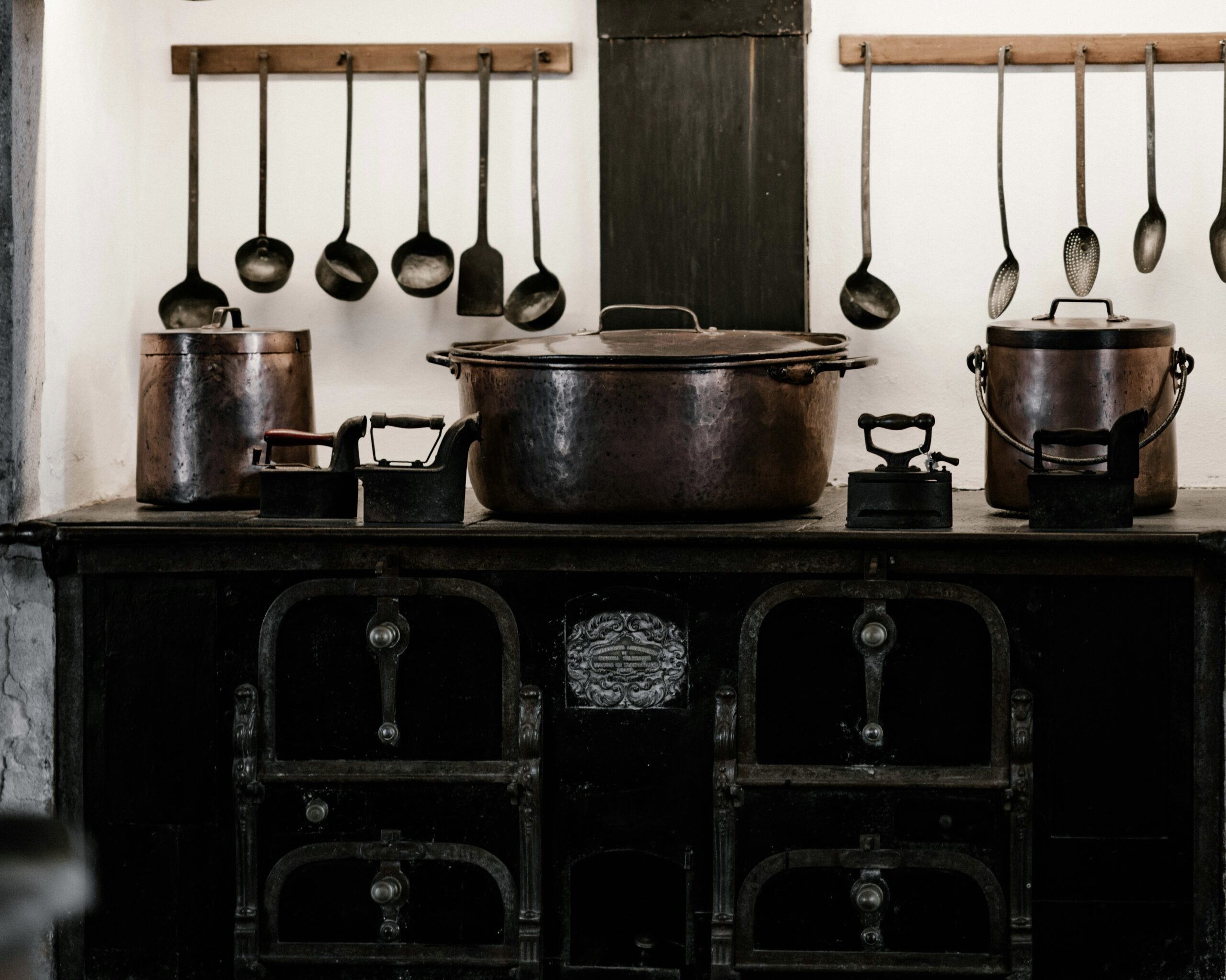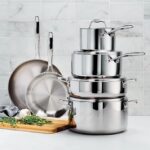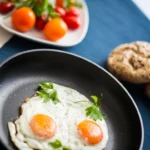Vintage Cookware 2024: Is Grandma’s Beautiful Old Pan Worth Using?

If you’ve ever rummaged through your grandma’s kitchen, chances are you’ve unearthed a treasure trove of old, sturdy pans that seem like they’ve been around forever. Vintage cookware, those timeless kitchen pieces from decades past, is experiencing a resurgence in popularity. But is grandma’s old pan worth using? Let’s delve into the reasons why these relics from the past are so cherished and what to consider before you start cooking up a storm.
Table of Contents
The appeal of Vintage Cookware
Vintage cookware is more than just functional kitchen tools; they’re pieces of history that tell a story. These items, often crafted from cast iron, copper, or heavy-duty aluminum, have a unique charm that modern cookware sometimes lacks. The appeal isn’t purely nostalgic—vintage pans are renowned for their durability, exceptional heat retention, and the unique patina that develops over years of use. Many home cooks and chefs swear by their even cooking and how they impart a special flavor to dishes.
These pieces often come with memories attached. Imagine the countless family meals prepared in that old cast iron skillet or the holiday feasts cooked in the vintage Dutch oven. Each scratch and discoloration has a story to tell, adding to the allure and sentimental value of these kitchen treasures.
Unparalleled Quality
One of the biggest draws of vintage cookware is its quality. In the past, cookware was built to last a lifetime, and then some. Cast iron skillets, for example, were designed to be handed down through generations. These skillets can withstand high heat and are incredibly resilient. Similarly, copper pans from yesteryears often feature a tin or stainless steel lining, which, if maintained properly, can provide superior cooking performance.
Vintage cast iron, for instance, often has a smoother finish than modern cast iron, which can improve its non-stick properties. This is because older pans were often polished or “machined” to a smooth finish, a step that many modern manufacturers skip to save on production costs. The result is a cooking surface that many find preferable for tasks like frying eggs or searing delicate fish.
Copper cookware, known for its excellent conductivity and temperature control, was often lined with tin. Although this lining can wear over time, it can be re-tinned, restoring the pan to a like-new condition. The craftsmanship involved in making these pans, with their thick copper walls and often ornate handles, speaks to a time when quality and aesthetics went hand in hand.
The Eco-Friendly Choice
Using vintage cookware is also an environmentally friendly choice. Instead of buying new, potentially lower-quality products that might need replacing every few years, you’re reusing something that’s already been made and has proven its worth. This reduces waste and the environmental impact of manufacturing new items. Plus, repurposing these old kitchen tools can be a satisfying project, turning something old and worn into a functional piece of art.
Every piece of vintage cookware you use means one less new product that needs to be manufactured. This reduces the demand for raw materials, lowers energy consumption, and cuts down on waste. In an age where sustainability is increasingly important, choosing vintage cookware is a step towards a more eco-friendly lifestyle.
What to Look For
Before you get too excited and start whipping up grandma’s famous recipes in her old pans, there are a few things to check to ensure they’re safe and functional:
- Condition: Thoroughly examine the pan for cracks, chips, or severe warping. While minor rust can often be cleaned off, structural damage can make a pan unsafe to use. Pay special attention to the handles and any rivets or screws that may have become loose over time.
- Material: Different materials require different care. Cast iron, for instance, may need re-seasoning to restore its non-stick surface. Copper might need polishing to bring back its shine, and you’ll want to ensure that any linings (such as tin or stainless steel) are intact and not worn through.
- Brand and Maker’s Marks: Some brands and makers are particularly sought after and can indicate a higher quality piece. Names like Griswold, Wagner, and Le Creuset often fetch high prices among collectors and are known for their longevity and cooking performance. Identifying marks can often be found on the bottom or handle of the cookware.
- Size and Weight: Vintage cookware can be significantly heavier than modern pieces. Make sure the weight and size are manageable for you. Larger pans are great for big family meals, but they might be cumbersome for everyday use.
- Functionality: Check that lids fit properly and that handles are secure. Some vintage pieces might have warped over time, which can affect their usability.
Restoring Vintage Cookware
If you find that grandma’s pan is in need of a little TLC, don’t fret. There are plenty of resources and tutorials available on restoring vintage cookware. Here’s how you can breathe new life into these kitchen treasures:
Cast Iron:
1. Removing Rust: Use a mixture of equal parts white vinegar and water to soak the pan, but don’t leave it in too long as vinegar can damage the iron. Scrub off rust with steel wool or a stiff brush.
2. Re-seasoning: Once rust-free, dry the pan thoroughly and apply a thin layer of vegetable oil. Bake it upside down in the oven at 350°F for an hour. Repeat this process a few times to build up a good seasoning.
Copper:
1. Polishing: Mix lemon juice and salt to create a paste, then rub it onto the pan with a soft cloth to remove tarnish. Rinse and dry thoroughly.
2. Re-tinning: If the tin lining is worn through, it’s best to have it professionally re-tinned to ensure safety and performance.
Enamelware:
1. Cleaning Stains: Use a paste of baking soda and water to scrub away stains. Avoid abrasive materials that can scratch the enamel.
2. Handling Chips: While minor chips might not affect performance, it’s essential to ensure there’s no exposed metal that can rust.
Safety First: Avoiding Cookware That Makes Your Food Glow in the Dark (Unless You’re Hosting a Party!)
While vintage cookware can be a fantastic addition to your kitchen, safety should always come first. Avoid using any cookware that has signs of lead or other toxic materials, which were sometimes used in older enamel coatings. When in doubt, consult an expert or do a bit of research to ensure your vintage treasure is safe for everyday use.
Lead is particularly a concern with older enamel-coated pieces, and it’s worth investing in lead test kits if you’re unsure about the safety of a piece. Also, be cautious with non-stick coatings from the mid-20th century, as they can deteriorate over time and may not meet current health standards.
Conclusion
So, is grandma’s old pan worth using? Absolutely—if it’s in good condition and you’re prepared to give it the care it deserves. Vintage cookware not only brings a touch of history to your kitchen but also offers unparalleled quality and durability. With a bit of love and maintenance, that old pan can continue to serve up delicious meals for years to come, making it a true heirloom piece. So next time you find an old skillet or saucepan in the attic, don’t dismiss it—embrace it! By doing so, you’ll not only enjoy a superior cooking experience but also honor the culinary traditions and stories of generations past.
Read More:
5 Easy Foods to Cook in Your Cuisineart Saucepan




